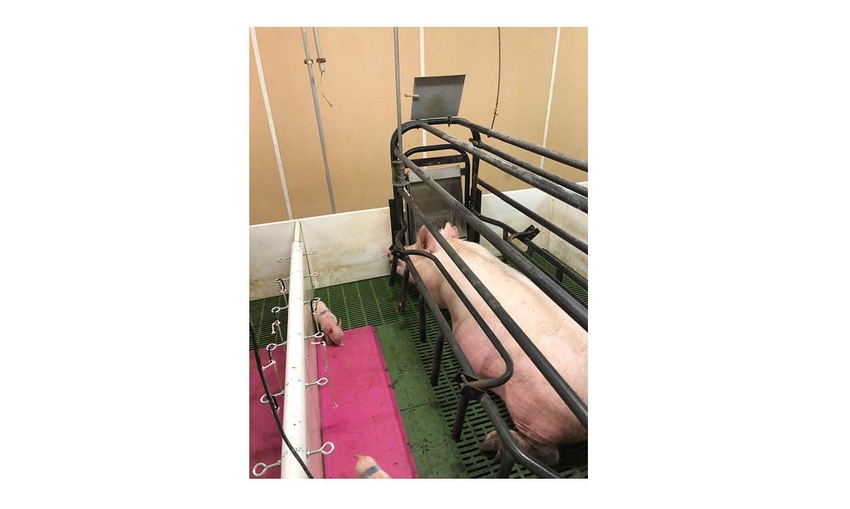Study examined if enrichment ropes would entice piglets away, reduce preweaning mortality.

Pre-weaning mortality continues to be a challenge in the swine industry, with most losses occurring in the first 72 hours of a piglet's life due to crushing. One of the main reasons this continues to happen in the farrowing unit is due to the fact that piglets are so cyclic in their behavior with eating and sleeping often occurring next to the sow.
Industry experts have suggested that if piglets could be enticed away from the sow, when they're not actively nursing, it might lead to a decrease in crushing and an increase in survival rates. While the use of an environmental enrichment has been used previously in the farrowing environment to entice the sow, there has been limited literature on luring younger neonatal piglets away.
Iowa State University graduate student Emiline Sundman says there's a reason for this limited research.
"This piglet is just so focused in on eating and suckling and sleeping that the concern is, do they even care if we put enrichment into their environment?" Sundman says. "Are they even going to interact with it? Are they just going to ignore it?"
Sundman set out to explore this topic in one of her recent research projects for her master's thesis — what could be added to enrichment ropes to attract piglets away from the sow?
From previous literature, the research team found two attractants that had worked to entice piglets — a milky cheese-based one and a fecal semiochemical that was made from sow pheromones The team set out to determine if neonatal piglets would interact with environmental enrichment away from the sow by describing the enrichment use, evaluating the impact of the different attractants on enrichment use and finally evaluating the enrichment impact on piglet survivability.
The trial included 161 piglets from 26 sows over two cohorts, housed in a typical farrowing stall environment, with interlocking slatted plastic flooring, two piglet areas to the side of the sow and a heat mat in one piglet area.
Enrichment ropes were placed on a removable PCV pipe with eyebolts in the farrowing stalls. All three ropes were positioned in the stall around 48 hours after birth. A base treatment of sunflower oil, which is relatively odorless and neutralized, was placed on one rope, with the other two having the milky cheese and semiochemical treatments.
Enrichment interactions, both frequency and duration, were collected. The interaction had to be a "purpose snout contact with the rope with the mouth open or closed." Observation via video was continuous during daylight hours when the lights were on.
Sundman says there was a high individual variation in results, however 121 out of the 161 total piglets did touch an enrichment rope on day two.
"Which is pretty high considering day two of life they're pretty newborn," Sundman says. "You'd think they're not really attentive to their environment, but we found that 75% of them actually, and again purposely, came up and touched with their snout on those enrichment ropes."
Frequency (p = 0.20) and duration (p = 0.21) of investigations were not affected by treatment. Preweaning litter average weight gain did not differ between treatments (p = 0.71). The piglets that chose the milky cheese enrichment rope had the lowest percent mortality when the enrichment ropes were present (Days 2 to 5, p = 0.01), and the piglets that chose the semiochemical treatment had the lowest percent mortality after the enrichment ropes were removed (Days 6 to weaning, p < 0.0001).
Another way mortality was examined was whether that pig was in the 75% group on day two that touched an enrichment rope or the 25% that did not. Four piglets died on day two and none of them touched an enrichment rope.
Sundman says the enrichment device was simple to build, implement and clean, and it did show some promise in getting piglets away from the sow.
"The pigs were attentive to the enrichment on day two which was pretty soon after birth, with that 75% interaction rate and that milky cheese might have a little bit more promise in terms of numerical increases," Sundman says. "And then there was some mortality trends there as well and again all the piglets that died on day two did not touch the enrichment ropes."
About the Author(s)
You May Also Like




